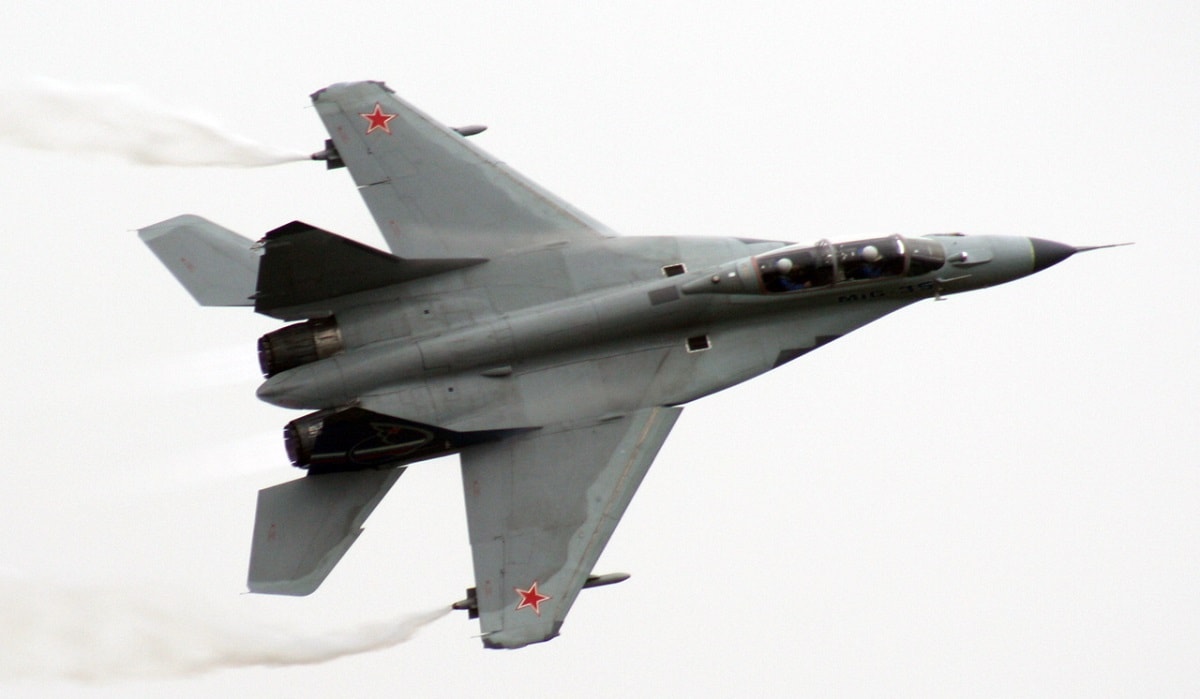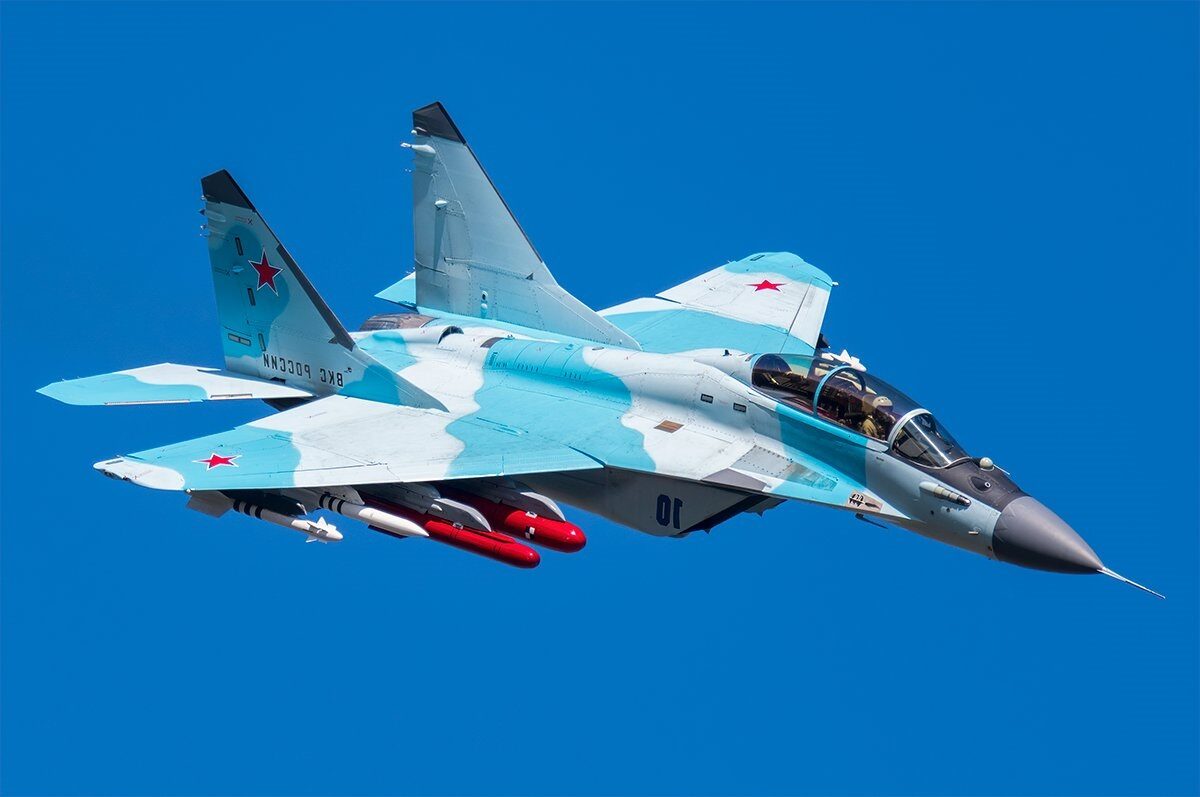The MiG-35 and the history of how it came to be – and how it could fail: Founded in 1939 by aircraft designers Artem Mikoyan and Mikahil Gurevich, the Mikoyan-Gurevich Design Bureau produced many notable combat aircraft for the Soviet Union and its satellite states. Nations from South East Asia to the Middle East flew various “MiGs” in combat throughout the latter half of the 20th century and continue to do so today. With the dissolution of the Soviet Union, the company was rebranded and later absorbed with others under one large umbrella, but still, it continues to operate as one of the premier aerospace defense contractors of the Russian Federation.
While MiGs flew in combat in the Second World War, it wasn’t until the Korean War that the designs first gained worldwide recognition. MiG-15s piloted by Chinese and North Korean pilots saw great success in shooting down American bombers, far outclassing the bombers’ escort fighters and eventually forcing the cessation of daylight bombing campaigns until UN forces could achieve air parity. As the Cold War progressed, MiGs continued to serve in proxy conflicts, with MiG-21s dueling American F-4s over Vietnam and French Mirages over Israel.
MiG-29 – the “Fulcrum”
At the height of the Cold War, American designers and engineers produced two exceptional combat aircraft, the F-15 Eagle and F-16 Falcon. Fearing its aircraft were greatly outclassed, the Soviet Union commissioned its defense industry to begin designing 4th-generation fighters to match these new threats. While initial efforts focused on a single design, the different capabilities of adversary aircraft coupled with different mission requirements ended up demonstrating the need for several designs. The MiG-29 was designed as a lightweight, versatile fighter. After its development, it went into service with frontline fighter squadrons replacing aging MiG-23s. By this time, it had earned the NATO reporting name “Fulcrum.”
What made the Fulcrum dangerous?
In the years following its release, MiG-29s proved to easily equal their contemporaries. Aspects of their aerodynamic design made them very adept at turning and slow flight, both essential traits in fighter aircraft. An auxiliary inlet mounted on top of the fuselage allowed Fulcrums to land and depart on rough or unfinished fields without having to worry about ingesting foreign object debris (FOD) into their engines. FOD is highly damaging to modern jet engines and most airfields go to great lengths to ensure they are free of FOD. Fulcrums have no such worries and as such are well suited to the vagaries of warfare which does not always pause for debris on the runway.
While initial builds had only 6 hardpoints for weaponry, later models were upgraded to 8 hardpoints which, along with a 30mm cannon, made it a formidable weapons platform. Some Soviet variants even had the ability to carry a tactical nuclear warhead. When pilots employed these weapons systems they were aided by an advanced radar suite, including a look down/shoot down radar, one of the first of its kind. This radar is capable of tracking aircraft below the Fulcrum, which previous radars may have lost against the clutter of the ground. While the initial production Fulcrums were serious aircraft, they have gone through many upgrades and modifications through the years, including a carrier-capable variant and increased compatibility with high precision air-to-air and air-to-ground weapons. It appears the MiG-35 is simply following this trend, building upon the tried and true Fulcrum instead of developing a completely new model.

MiG-35, What’s New?
From the outside, the MiG-35 looks remarkably similar to its predecessor MiG-29s, which is unsurprising as most of its improvements are beneath the surface. New fuel tanks nearly double its range, a fly-by-wire system gives pilots exceptional control of their aircraft and an all-around improved cockpit reduces pilot workload and increases situational awareness.
Most of the upgrades to the MiG-35 come in the form of enhanced targeting infrastructure which will allow it to employ the most modern weapons system. As Tom Demerly of the Aviationist says, “The new PPK thermal imager/TV and laser rangefinder allows the MiG-35 to autonomously guide precision munitions similarly to how the current U.S. F-15E Strike Eagle prosecutes ground targets.” In addition, the 35 has been equipped with an OLS-K targeting pod to track vehicles and surface targets at great range. These improvements will allow the MiG-35 to find and engage targets more autonomously vice the typical Russian tactics requiring ground units to provide vectors to a target. In all, while the MiG-35 may not necessarily deserve a new number designation, it represents a significant improvement for the fighter.
MiG-35, What’s Wrong?
Based on the MiG-35’s sophisticated modifications and advanced characteristics, one would expect to see the fighter dominate the skies over Ukraine. However, similar to the Sukhoi Su-57 and the Armata main battle tank (MBT), the fighter jet is nowhere to be found. Based on Russian propaganda and the widespread views of many industry analysts, conventional wisdom asserted that the Russian military would swiftly and powerfully achieve its war objectives in Ukraine. However, the Russian military has been proven to be a paper tiger since its military is untrained, unequipped, and simply unprepared to take on huge endeavors like invading a sovereign country. While Russia has indeed taken deliveries on the Mig-35, it does not possess it in sufficient quantities to turn the tide on the battle field.
Foreign customers have moved on from the MiG-35
Russia’s lack of operational MiG-35’s has also turned off foreign customers from procuring this platform. Initially, both Egypt and India expressed interest in acquiring the “Gen 4++” fighter, but both countries never pulled the trigger. In addition to Moscow’s delay in production, the jet’s extremely high maintenance costs, and lackluster performance compared to its Su-27 and Su-30 near-peer airframes have forced potential clients to turn elsewhere for newer fighters.
The MiG-35 is still undergoing its mandated state flight-test process – nearly eight years after the jet entered its development phase. The jet’s predicted completion date has been delayed multiple times over the years, which has dissuaded potential customers from purchasing the airframe.
Labeled as a “dead duck” by Western analysts, Russia’s MiG-35 may have a longer development phase than actual operational life.
Maya Carlin is a Middle East Defense Editor with 19FortyFive. She is also an analyst with the Center for Security Policy and a former Anna Sobol Levy Fellow at IDC Herzliya in Israel. She has by-lines in many publications, including The National Interest, Jerusalem Post, and Times of Israel.
This piece has been updated since publication.

